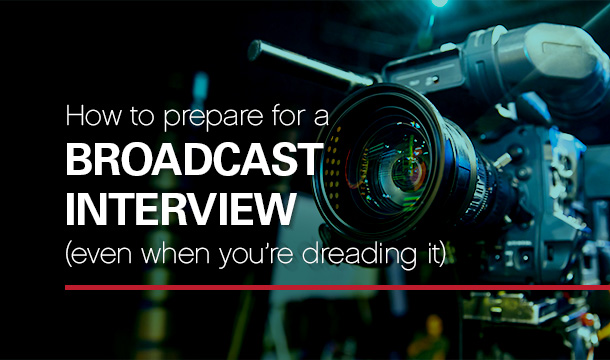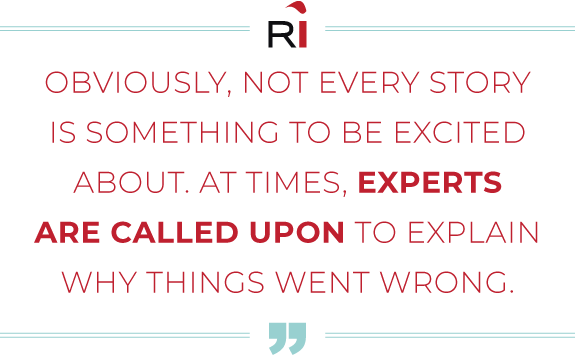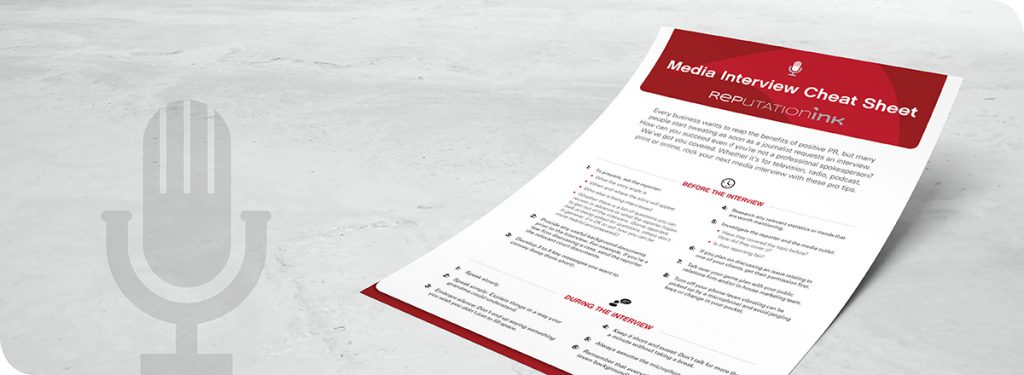How to prepare for a broadcast interview (even when you’re dreading it)
“This isn’t going to be on TV, is it?”
I can’t count the number of times I heard that question from someone I was about to interview — even though I was holding my clearly branded TV news microphone up to their face and my photojournalist colleague was pointing a professional-quality video camera lens at them. Sometimes I felt like saying, “Um, yeah. What else would we be doing here?” (But I didn’t.)
It speaks to some people’s deep-seated, all-encompassing fear of speaking in front of the camera (or a webcam or a podcast microphone). I’m here to tell you: you can do it — even if you don’t think you can at first. As a former broadcast news anchor and reporter with two decades of experience, I’ve got some thoughts on how to make that dreaded on-cam interview easier for yourself.
Broadcast news coverage can bring value to your business
First off, it helps to know why doing a broadcast news interview is worthwhile. The tales of broadcast news’ demise have been, well… if not greatly exaggerated, at least a bit more doom and gloom than what’s really happening. Viewership has declined, but broadcast news (especially local) still has a big audience. A study from the Pew Research Center found that 66% of Americans still follow local TV news somewhat closely. The trick is to keep them watching. A good TV interview or soundbite can help with that — and more importantly, get your business’s mission and message in front of tens of thousands of people right in your own community.
Feelings, focus and (yes, they belong in last place) facts
Architects, engineers, construction professionals, lawyers and many subject-matter experts might be more comfortable dealing in facts and figures, but compelling broadcast content is about feelings. Of course, it’s vital to share facts about the project or innovation you’re touting, and reporters do everything they can to get those facts right. But they often take that factual information and use graphics or copy to explain it because they can do it faster and more simply than you can in a soundbite. That’s their job, and time is their currency.
The part of your interview the reporter is more likely to include is you sharing excitement, passion or pride about your project. If you’re having trouble conjuring that, think back to why you got into your profession in the first place. How would you describe this project/advancement to your 10-year-old self? Is it something your company’s never done before? Will it make life better for people who use it? Is it just really cool?
One other danger with sticking to just the facts, ma’am, is that experts can have a tendency to get into the weeds. That can be a problem because brief, succinct soundbites work best on TV. You know every detail of your project, but a reporter is taking a high-level look. She or he is probably not interested in a tangent about how you initially planned to use nitrile rubber gaskets but you ended up going with ethylene propylene-diene monomer gaskets because of their tensile strength…..zzzzz.
See what I mean? Stay focused on the story you’re trying to tell.
Obviously, not every story is something to be excited about. At times, experts are called upon to explain why things went wrong. Here are some ways we help AEC firms prepare for crisis scenarios.
Examples
This story is a great example of how the subject matter expert is not giving facts and figures; he’s talking about how his team is motivated to get the job done.
In this story, we hear from a developer talking about what a project means for the future of his city.
This story demonstrates a construction worker’s passion for improving his community.
The sound bites in this story shows how a lawyer cares for her clients.
But toward the end of this story, an expert starts to list not-super-exciting locations and figures that the reporter could have illustrated better with a graphic.
But I’m STILL nervous…
Okay, so now you have a better idea of how to act and what to talk about in a broadcast interview. But perhaps you’ve still got butterflies in your stomach. Here are some things to remember.
- Don’t beat yourself up before you even start. We are all our own worst critics. When you listen to someone talking during a newscast, are you thinking about how many times they say “um” or “uh”? Nope. Viewers aren’t thinking that about you, either.
- Don’t let a reporter stress you out. If they’re crabby or brusque, it’s probably not about you. This might be the third story they’ve covered today, and they’re exhausted and hot. Plus, more and more TV news reporters are now multimedia journalists (MMJs), which means their workload is doubled because they do the reporting, videography and editing by themselves. Ask for what you need — sitting instead of standing, for example, or turning a bit so the sun’s not right in your eyes. They’re professionals and will figure it out.
- Don’t be distracting. The day of a broadcast interview is probably not the time to debut your new purple paisley shirt and plaid pants. Wear solid colors, an outfit you don’t have to futz with, or your work clothes. It’s the same reason news anchors don’t go on TV with pink hair — if a viewer is too focused on something you’re wearing or an element of your style, they’ll stop listening to what you’re saying.
- Don’t doubt your credentials. Remember, you are the expert. Just share what you know and, more importantly, how you feel about it. Your company trusted you to talk about this because they have confidence in you.
- Don’t forget to breathe. A few deep breaths can go a long way to calm your nerves.
Now go nail this — and yes, it’ll be on TV.
For more tips on how to rock your next interview, check out our media interview cheat sheet.
Bonus tips for podcasts/YouTube/Zoom interviews
More formats are emerging where time constraints no longer exist. If you’re doing a podcast or YouTube interview, the format is more relaxed. Your conversation will likely be edited, but much less heavily. The same rule applies, though: if YOU don’t sound interested and engaged in your subject matter, why would a viewer or listener be?
In terms of answer length, think of it like a conversation. When you’re talking to someone at a party, you can feel it when the other person’s been talking too long, right? Don’t be that guy.
Many of these interviews are conducted on Zoom or other video conferencing apps. A lot of us learned Zoom best practices during the pandemic, but for many, they’ve fallen by the wayside. When you’re on a video call:
- Have a light source on your face, not behind you.
- Position your camera at eye level or slightly above. (If you can see your ceiling, you’re doing it wrong.)
- Make sure your camera is angled properly — you don’t want too much empty space above your head, or the top of your head getting cut off.
- Wear a solid color or something that won’t distract the person looking at you.
- Try to look into the webcam when you talk, not at the eyes of your interviewer on the screen. If that’s too uncomfortable, position the Zoom window as close to your camera as possible.
- Don’t get hung up on your background. You don’t want too much movement or mess back there, but remember, people are looking at YOU, not what’s behind you. Your company may even have a branded virtual background for you to use.
For even more information, download our free media interview cheat sheet below!










